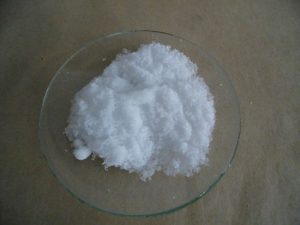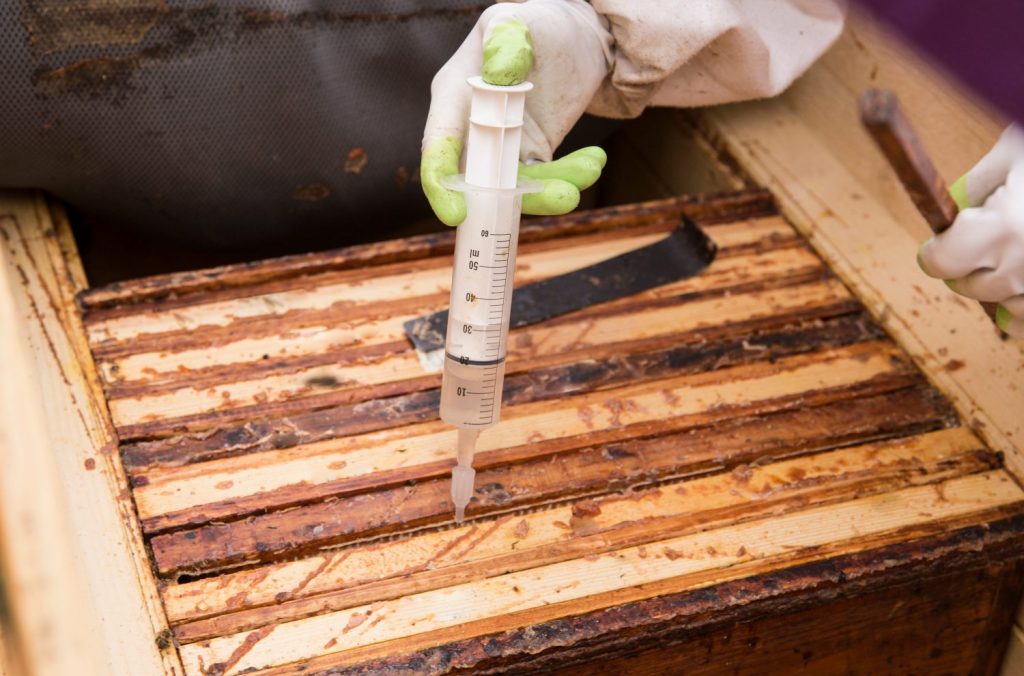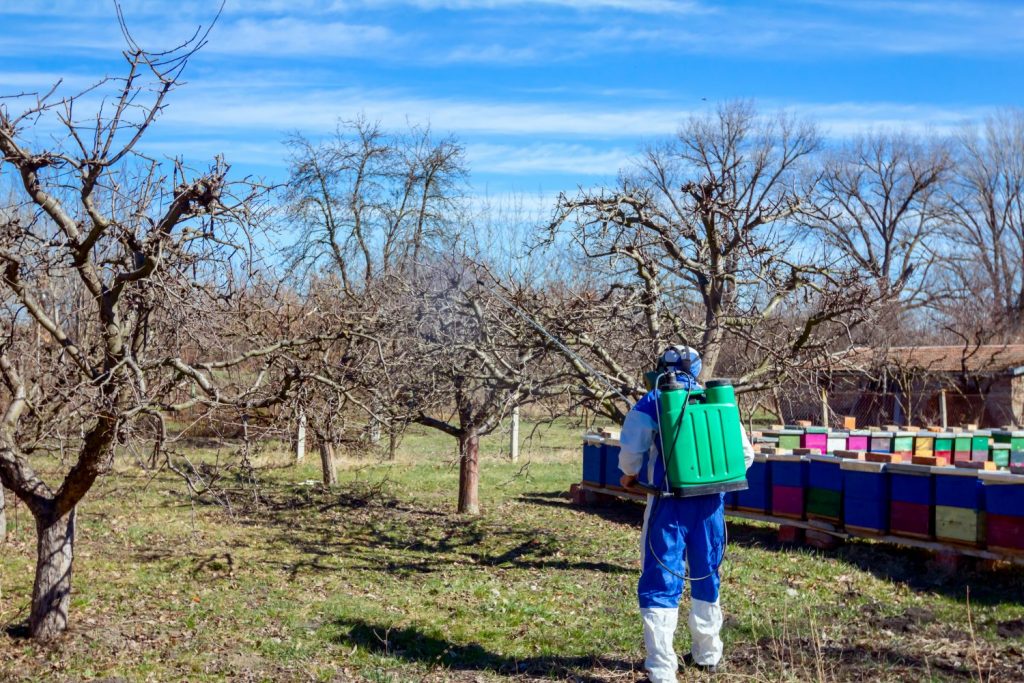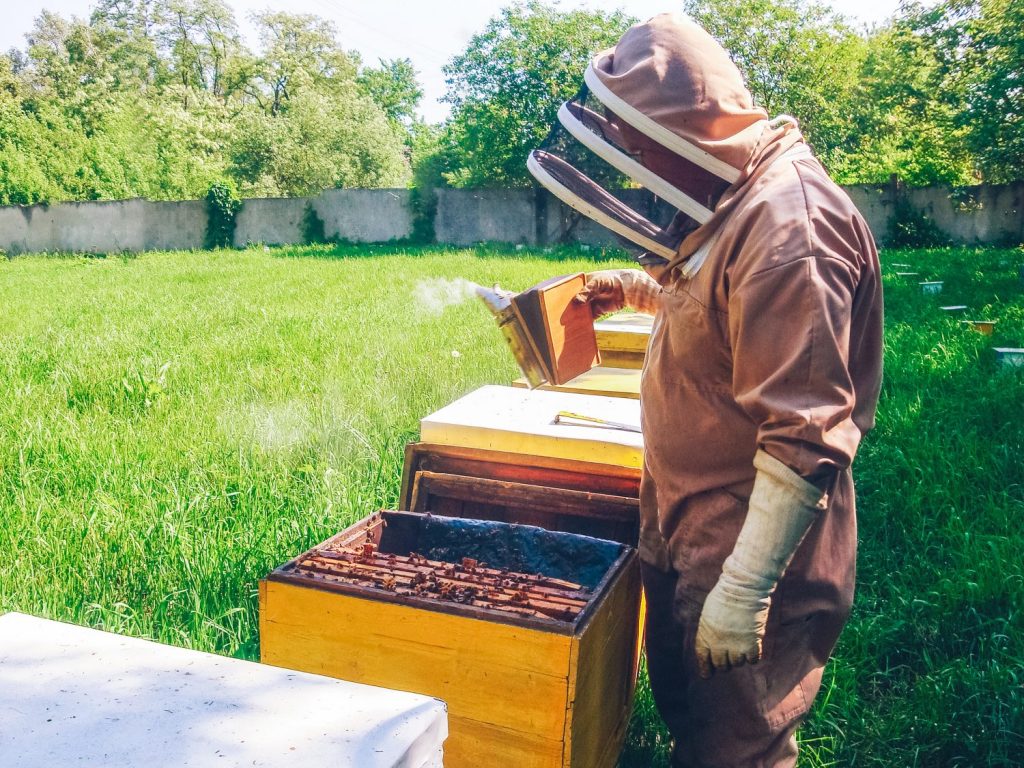If you purchase an independently reviewed item through our site, we earn an affiliate commission. Read our affiliate disclosure.
Quick Overview
In the battle against the pervasive Varroa mite threat to honeybee colonies, beekeepers often turn to formic and oxalic acid treatments. This article provides an in-depth comparison of these two methods, highlighting their application techniques, efficacy, and safety considerations.
Varroa mites, which have spread widely in the USA, pose a significant risk to bee populations, particularly during winter when hives are less accessible for treatment. Formic acid, a natural fumigant found in many foods, can effectively kill mites within the hive, including those in capped cells, without leaving harmful residues in honey or wax. Oxalic acid, while also effective, does not penetrate capped brood and is best applied when brood is minimal.
Both acids require careful handling due to their potential to harm both bees and humans at high concentrations. It is important to use these treatments responsibly and in conjunction with other mite control strategies, such as hive management practices, to prevent resistance and ensure the health of bee colonies.
The Varroa Problem
Control of Varroa mites is done using a number of methods, including using treatments in the beehive. Formic acid and oxalic acid are two treatments that are popular in beekeeping circles for the control of Varroa mites. They are applied using varying methods and have their individual levels of efficacy. This guide compares formic acid vs oxalic acid in their beekeeping use. It also sheds light on the Varroa mite challenge in beekeeping and its impact on honeybee colonies.
In the USA, Varroa mites are an exotic parasite. They came into the USA through bees from other continents. Imported honeybee colonies from Europe are believed to be the main culprits. The mites have spread to many states in the USA and today pose a significant threat to many honeybee colonies. Varroa mites are most dangerous over winter. The cold prevents frequent opening of the beehive for inspection. Bees clustering together makes it difficult to apply treatments for Varroa mites. In early spring, many beekeepers open their wintered hives only to find the colony has been dealt a fatal blow by the mites.
Life Cycle of Varroa Mites
Honeybees are the hosts in a parasitic relationship with Varroa mites. The mites bite onto the thorax of honeybees on the upper side. You can easily see them as pin-head-sized brown spots on the backs of bees. The mites feed on bee hemolymph. They weaken honeybees and transmit other infectious agents within the colony they have infested. To make matters worse, Varroa mites lay their eggs in bee brood. The mites affect the development of brood into adult bees. It is not unusual to find bees with deformities and other weaknesses as a result of Varroa mite infestations.
The number of bee broods in the hive affects the population of Varroa mites. When a lot of brood is present, Varroa mite numbers start increasing at alarming rates. In a few weeks, the population of mites can double or triple if untreated. When this happens, bees spend more time trying to get the mites off their backs, instead of being productive.
How Varroa Mites Affect Honeybees
The behavior of individual bees can also be affected such that the bee does not perform its normal activities in the beehive. Forage bees are also affected and do not bring in enough resources to feed the colony. These effects work together and lead to the eventual collapse of the affected honeybee colony.
When brood that has been infested by Varroa mites emerges from its pupation stage, the adult bee has a mite on its back. It stays on the bee feeding on hemolymph. The adult Varroa mite detaches at some time from the bee it is on to lay eggs in the hive. One egg is laid in each cell where there are bee larvae before the larvae are sealed up for pupation. On the bee brood, you can sometimes see the developing Varroa mite on the upper area of the larvae.
Formic Acid Use in Varroa Mite Control
Treating beehives for Varroa mite control is important in beekeeping. It ensures that the Varroa mite population is kept down. Some treatments promise to clear the mites from your beehives. Treating for Varroa mite control helps restore good health to your honeybee colony. There are many treatments available to beekeepers including formic acid and oxalic acid. Their methods of application vary.
Formic acid kills Varroa mites by affecting metabolic pathways. It is a simple organic acid with a small molecule. The acid evaporates readily at room temperature. In beehives, it is used as a fumigant. Formic acid is a natural acid and is found in many foods eaten by both animals and insects. Its vapors dissipate through a treated beehive and kill phoretic Varroa mites. The acid also has a lethal effect on tracheal mites.
At the right concentration, formic acid can kill mites in capped cells. This requires being done carefully and using slow-release methods to avoid killing bees in the beehive. Male mites are more sensitive to formic acid treatment than female mites. Killing all the male mites in a beehive has an effect on the overall male population. The unfertilized females that are left in the beehive lay eggs that do not hatch. When they die off at the end of their lifespan, the beehive is left with no mites.
Concentrations of formic acid in honey and wax after treatment are low. Food and drug authorities are not very much concerned about its presence in food. Allowing enough time between the end of treatment and harvesting of beehive products, allows formic acid to dissipate from the beehive. The harvest gives you clean products with very little concentrations of formic acid.
Varroa Mite Control Using Oxalic Acid
Oxalic acid has become an acid of choice for many beekeepers dealing with Varroa mites. It is approved for use by agriculture and apiculture regulation authorities in many North American and European countries. In the USA however, oxalic acid still faces many challenges getting registered and approved for use with honeybees. The acid is unusual in its strength despite being an organic acid. Your safety and caution are therefore very important when handling oxalic acid.
In nature, oxalic acid is present in plants in varying concentrations, depending on the plant species. The most known plant that contains oxalic acid is Oxalis Latifolia and the related Oxalis spp. This means that animals and humans have pathways to metabolize oxalic acid. In large concentrations and prolonged exposure, oxalic acid is injurious. It can lead to the formation of kidney stones when ingested.
Other effects of exposure to the acid at high concentrations include irritation and damage to mucous membranes and the skin where exposed. Washing off with a large amount of water is advised when you have contact with oxalic acid on the skin, eyes, and other mucous membranes such as in the nose.
When used to treat beehives in Varroa mite control, oxalic acid does not remain for long in the hive. Once treatment has ended and the acid is no longer being applied to the beehive, it dissipates. The acid does not have soluble fats in it. It therefore cannot enter wax or honey with ease.
Efficiency of Formic and Oxalic Acid
The efficiency of treatments using formic acid and oxalic acid varies by concentration. Other factors that affect efficiency include the mode of application and duration of the treatment. Formic acid can be used in more than one treatment to make sure you kill all mites.
When using these treatments, it is good to rotate them with other Varroa mite control solutions. It prevents the development of resistance to the acids. Evidence points towards Varroa mites having very little capability to develop resistance to acid treatments. Even then, there is no need to risk the rise of resistance.
Proper constitution and application of these natural acids give very good mite control effects. With the right concentration, the acids kill all phoretic mites within a few days. Subsequent application is used to kill the mites that emerge from brood cells. In 2-3 treatments, you can rid the beehive of all Varroa mites. Formic acid has the capacity to kill Varroa mites in a capped brood. A single application can thus give you highly efficient control of Varroa mites in a beehive.
The amounts of natural acids used in controlling Varroa mites are small. They are highly toxic to the small Varroa mites. It is also paramount that the beekeeper keeps concentrations of the respective acids low so that they do not harm bees. At very high concentrations, you kill the Varroa mites and some of your bees are affected too. It would be an exercise in futility if you kill both mites and the honeybees you were protecting when applying these natural acids for Varroa mite control.
Applying Oxalic Acid
Formic acid and oxalic acid are applied in two main ways. One is the vaporization of crystals or concentrated solutions. Oxalic acid comes in the form of crystals that can be loaded into a vaporizer. The vaporizer is inserted into the beehive and turned on. It heats up and turns the crystals of oxalic acid into oxalic acid vapors. The vapors move to various parts of the beehive and then cool down. They form a layer over nearly all the surfaces of the beehive. Mites coming into contact with the acid die off soon after. Honeybees also help move the acid to various sections by their movement within the beehive.
You can also apply oxalic acid in the form of a solution. Dissolve the crystals of oxalic acid in water and then use the solution to spray onto beehive surfaces. The sides of beehives and the outer surfaces of frames are excellent locations. Equipment that gives off a fine spray should be used. It helps with avoiding the over-application of the acid. Some of the sprays can be sprayed directly onto honeybees if the Varroa mite infestation is severe.
Treating the beehive with oxalic acid is best done in winter and in spring/summer. When an infestation in autumn risks hurting the bees in the coming winter, you can apply some treatment for a few days or weeks. 3-5 milliliters of 3.5% oxalic acid solution are used per seam of bees.
In the spring or summer treatments, 5 milliliters are used. The effectiveness during summer and spring applications is lower because oxalic acid does not kill the mites in the brood. A repeat application after a week or two kills the mites that were in the brood.
Applying Formic Acid
Formic acid is best applied using the dribble method. While it can be vaporized into the beehive, the dribble application of formic acid gives the best spread and kill rate of Varroa mites. A 65% solution of formic acid is used. It is sprayed onto beehive surfaces and the bees in the beehive.
A third way to apply formic acid in a beehive is to use slow-release preparations. These often take the form of pads placed strategically in the beehive. They release some formic acid onto bees upon contact. The bees then spread the acid to other parts of the beehive in their usual movement around the hive. The entrance of the beehive is a great location for the placement of such pads and strips. It captures all bee traffic by forager bees, and even those just leaving the beehive briefly for cleansing flights. Other great locations include on top of brood frames and the frames in honey super boxes.
Safety When Applying Treatments for Varroa Mite Control
Organic acids can be very injurious to both humans and animals. In beekeeping, the use of organic acids to control Varroa mites requires a lot of safety precautions to be taken. Planning for treatment should include measures to deal with spills and accidental exposure to the acids. In the worst cases, exposure results in lifelong effects including blindness if the eyes are exposed to oxalic or formic acids. It is upon the beekeeper to ensure safety precautions are in place and that the process of treating beehives with these acids is done in the right manner.
Protective equipment for the beekeeper and attendants should be used. This includes waterproof suits and gloves. Due to the risk of hurting your respiratory system, a mask can be used or be close at hand. Mixing any of the acids with water when making a solution should be done using exact amounts of both water and acid. A graduated measuring container should be used.
Mitigation Measures
In addition to basic protective equipment, you should have mitigation measures in place. In the event of a spill or accidental contact, water should be available to wash off the acid. Soaked clothes should be removed immediately too. For backyard beekeepers, getting water to wash off acid is easy. A garden hose connected to a water outlet is easy to bring to the backyard apiary. In other beekeeping operations, a large container of water should be brought with you. It should hold at least 5 gallons of water. Some baking soda can be dissolved in the water to neutralize the acids.
After the successful application of oxalic or formic acids, wash your hands. The face too can be rinsed with some clean water. Accidental ingestion of these acids is injurious to your health. All equipment used to treat beehives should be cleaned too. Any remaining acid should be returned to a suitable container that is sealable. The container should not allow spilling of the acid even in small amounts. It is then stored in a proper location away from the reach of children and unauthorized persons.
A cool dry place is great for the storage of organic acids. It can be darkened to prevent dissociation of the acids due to exposure to light. Disposal of empty containers of formic or oxalic acid should be as per environmentally friendly guidelines provided.
Hive Management for Varroa Mite Prevention
In addition to the use of natural acids, there are other methods and substances you can use to control Varroa mites. Hive management practices can also be tweaked as needed. The various things you can do as part of hive management to control Varroa mites interrupt the lifecycle of the mites. They target different aspects of Varroa mite life and the process of beehive infestation. The most popular of these methods are:
Using a Screened Bottom Board
The bottom board of the beehive is the lowermost part of the hive. It can be solid or screened. Some bottom boards can be switched between solid and screened by removal or insertion of a panel. A screened bottom board helps with the aeration of the beehive and pest and parasite control. Varroa mites sometimes fall off the backs of honeybees.
At other times, honeybees remove the mites from their backs in deliberate action. The mite that is detached from the back of the bee usually falls to the bottom of the beehive. Where a solid bottom board is used, the mite remains in the beehive and can climb onto another bee.
With a screened bottom board, the mite falls onto the ground and dies. Using a screened bottom board is a choice made by individual beekeepers. Some are against using screened bottom boards in their apiaries.
Sugar Powder Coating
Honeybees have behavioral characteristics that can be taken advantage of to control Varroa mites. Typically, a honeybee spends some time grooming itself in a day. It also spends more time grooming itself if it detects inappropriate substances on its body. Beekeepers take advantage of this to exert some control over Varroa mites. They use finely powdered sugar to cause bees to resort to grooming behavior.
Finely powdered sugar is spread over the bees in a beehive. Small amounts are enough for the job. A sieve of some sort should be used to give an even spread of the powdered sugar. In the process of grooming themselves to remove the powdered sugar, honeybees remove mites from their backs. This tactic does not clear mites from the beehive but is useful for the reduction of mite populations.
When combined with other measures such as the use of a screened bottom board, it can drop mites to a level where you only need a little application of chemical treatments to rid the hive of all mites. However, it should be noted that using sugar powder coating does not affect mites in pupating honeybee larvae.
Brood Removal and Regulation
Varroa mites are dependent on growth alongside bee larvae at the start of their lifecycle. Removal of bee brood denies mites their breeding grounds. It can be done before treatments or after treatments are applied. Manipulation of the hive to make it broodless involves the removal of brood frames among other practices.
Use of Essential Oils
Essential oils are plant extracts that often bear the dominant odor of the plant they came from. They have minimal nutritional value but are great for controlling both Varroa mites and Thoracic mites.
The oils are fed to bees in pollen patties, and in sugar water preparations and can also be dripped onto bees. Absorbent cloth and paper pads and strips are used for contact dissemination of the essential oils in the beehive. Bees coming into contact with the absorbent materials soaked in an essential oil spread it through the beehive. Varroa mites get in contact with the oil and die off.
You can also vaporize essential oils for even spread in the beehive. It is believed that a combination of strangulation, disruption of metabolic pathways, and an effect on the nervous system of Varroa mites leads to the mites falling off bees and their eventual death. Not all essential oils can be used with honeybees. You should go for those that have been proven to be most effective and safe for use with honeybees and humans.
Application of Mineral Oils
Various mineral oils that are not harmful to bees and people are applied in beehives to kill Varroa mites. The mites that are killed in this manner are those that are moving about in the beehive. Attrition on the mite population over time rids the beehive of all mites. Adult mites die before laying eggs or after laying very few eggs in the hive. This lowers the population of mites until there are no more in the beehive.
Brief contact with mineral oil does not affect honeybees. The application uses bees as the major dispersal agent in the hive. Vaporization is also sometimes used with the selected oils. Upon contact, mites cannot seem to be able to hold onto bees. They fall off bees and cannot climb back. The mites die soon after. This method of Varroa mite control can be combined with the use of a screened bottom board for better results.
Beehive Hygiene and Space Reduction
Beekeepers ensuring high standards of hygiene in their beehives find it easy to prevent mite infestations. In a properly cleaned beehive, the mites have very few places to hide. Debris in the beehive should be removed as soon as it is seen. Honeybees too clean out the beehive but can take a long time to remove large objects. Comb and dead bees form the bulk of beehive debris. They can be found among the beehive boxes in a stack and on the bottom board.
Where the honeybee colony is small, space reduction helps with beehive security. The honeybees in the colony have less space to patrol and guard against intruders. During storage, beehive boxes can be treated for various pests and parasites so that they do not hide in the boxes and lay eggs. Hot water is great for control of Varroa mites in beehive boxes. You can wash the boxes with hot water before storage and then ensure the boxes are not accessible to bees or other pests and parasites.
Conclusion
Varroa mites are a big problem for beekeepers. They invade beehives and wreak havoc on honeybee colonies. Manufacturers of beekeeping equipment and treatments have a lot to offer beekeepers for the application and successful use of both formic acid and oxalic acid. The decision to use any of these acids rests with the beekeeper. They are both effective in controlling Varroa mites. Formic acid also helps with the control of thoracic mites.
Use the information in this comparison of formic acid vs oxalic acid to evaluate the acids and settle on the best one to treat your beehives with. Remember to rotate the treatments with other control methods so that Varroa mites do not develop resistance to any one method of treatment.
References
- https://cordis.europa.eu/article/id/422039-what-can-be-a-possible-reason-for-the-inefficiency-of-treatment-of-bees-with-formic-or-oxalic
- https://www.youtube.com/watch?v=1m0dzd6E7Pc
- https://www.beekeepingfornewbies.com/comparing-varroa-mite-treatments/
- https://www.beeculture.com/comparing-mite-treatments/
- https://www.ams.usda.gov/sites/default/files/media/LSOxalicAcidApril2019FinalRec.pdf
- https://scientificbeekeeping.com/oxalic-acid-questions-answers-and-more-questions-part-1-of-2-parts/
What are your thoughts on this article? Leave a comment below and let us know.
 BeeKeepClub Resources and Guides for Beekeepers
BeeKeepClub Resources and Guides for Beekeepers






What essential oils are used, article does not say?
Hi, check out the following article for the essential oils that are used: https://beekeepclub.com/how-to-use-essential-oils-for-honey-bee-mite-control/